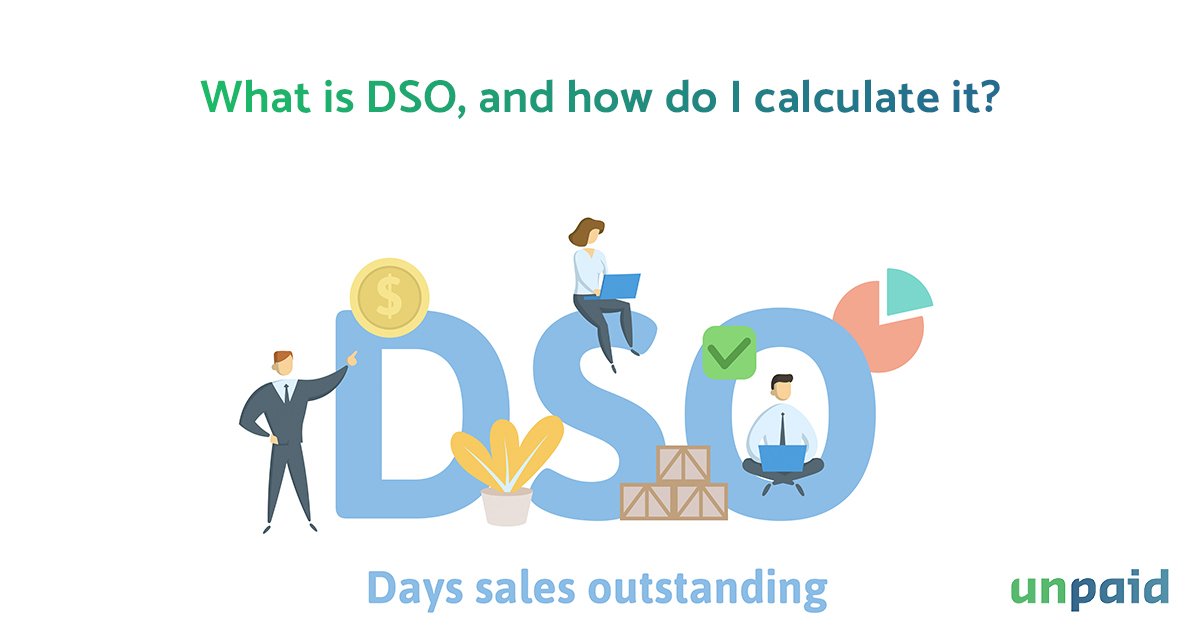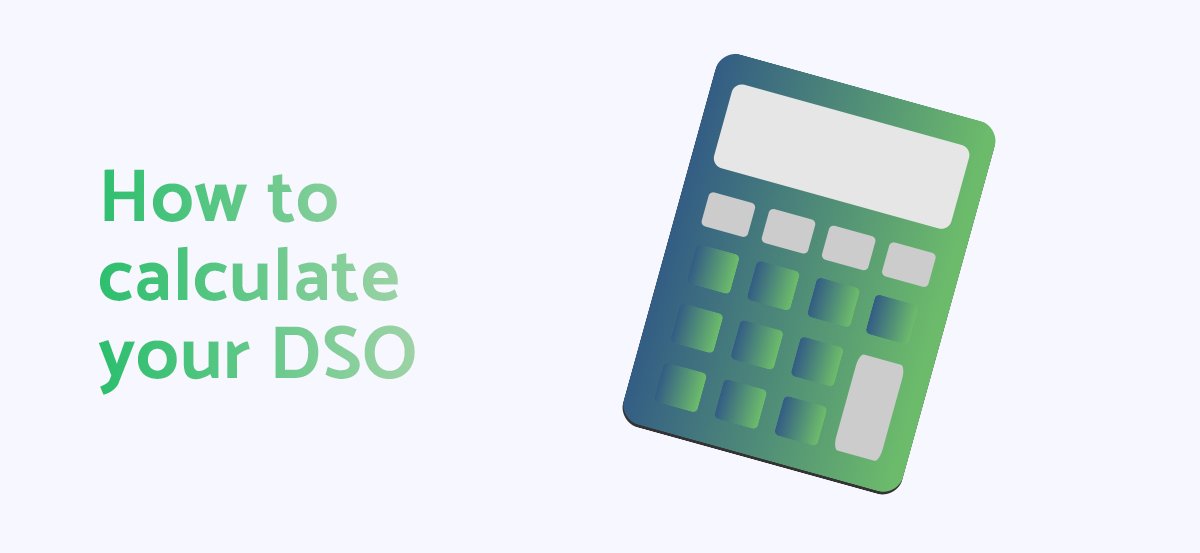What is DSO, and how do I calculate it?
Days Sales Outstanding (DSO) is one of the most widely used measuring tools in receivables management. In plain language, the DSO ratio indicates how long you must wait, on average, for a payment. Find out in this article how to calculate your DSO and how monitoring this parameter can improve your business.

What is Days Sales Outstanding (DSO)?
The DSO ratio refers to the average number of days it takes a company to get an invoice paid after a product or service is delivered. Thus, your DSO is a good indicator of whether your receivables management is working.
What is the ideal DSO ratio? It depends on several things but mainly on the payment term you use. A DSO that is the same length of time as your payment term, or slightly longer, is certainly beneficial, but, above all, keep an eye on the evolution of your DSO ratio. If it decreases, you are doing well; if it increases, you must tackle the cause.
What does your DSO ratio say about your company?
Low DSO = good financial management
This is positive and what every company strives for.
A DSO showing a low number of days means that, as a company, you are on the ball and collect your invoices quickly. The advantage is that you can better manage and utilise your working capital. As a result, your liquidity and cash flow are healthy, and your company can work efficiently.
A low DSO also means that you inspire confidence in banks and potential lenders, so you will be able to obtain a loan more easily. Logically, your DSO ratio tells them that you pay attention to credit and risk management. That's why investors find a low DSO ratio attractive.
High DSO = credit management could be improved
If your company has a high DSO, it means that, on average, your customers wait a long time before paying their invoices. In fact, you are giving your customers a supplier credit - a form of credit where the buyer does not have to pay immediately after delivery. You can do this deliberately as an element of customer service, but often a high DSO indicates inefficient accounts receivable management and a risky customer portfolio.
Common causes of a high DSO include:
- Poorly organised administration and invoicing.
If, as a company, you do not properly follow up on outstanding invoices, the customer is given free rein to pay whenever they want.
- Customers who cannot or do not want to fulfil their payment obligations.
- Standard long payment terms.
-
This need not be a problem if you can pay your suppliers on time. SMEs are allowed a maximum payment term of 90 days. In this way, legislators prevent smaller companies from having cash-flow problems by working with large customers who demand very long payment terms so they can benefit from the advantages of supplier credit.
A DSO ratio that is too high can lead to cash flow and working capital problems. In the worst case, your company may end up being unable to pay its own bills on time.
How to calculate your DSO
There are different ways to calculate your company's DSO ratio. Below are the most common.
Standard method:
(End of month accounts receivable balance / Monthly turnover) x 30 = DSO, expressed in days.
For the number crunchers, divide the total amount of outstanding invoices at the end of a month by the total monthly turnover for that month and multiply the result by 30. This way, you will find out how many days it takes your customers, on average, to pay your invoices.
Quick-inventory method:
((Accounts receivable balance at the end of the month / (Annual turnover/12)) x 30 (days) = DSO, expressed in days
Here, you divide the total amount of outstanding invoices by your average monthly turnover. This method gives a more nuanced result.

How to calculate your DSO
Fortunately, there are plenty of ways to reduce your DSO ratio.
- Optimise the invoicing process
Do your invoices look efficient? Do you express unambiguous general terms and conditions? Write down clear payment agreements, invoice on time, and set out in a straightforward credit policy how you will react if a customer does not pay on time.
-
Do business with creditworthy companies
Find out in advance about the payment behaviour and creditworthiness of a potential client. This way, you avoid doing business with stubborn defaulters.
-
Credit insurance
If you have big players as customers, or if you work for a big company yourself, credit insurance can protect you against defaulters. If your customer gets into financial difficulty and does not pay the invoice, your credit insurer will compensate.
DSO, a useful tool
Although many companies keep a close eye on their DSO ratio, there are some doubts about its usefulness.
It is true that the DSO has drawbacks, including:
- The figure is an accumulation of everything, including short and long payment terms, good and bad payers, and large and small invoice amounts etc.
- The DSO changes quickly because it is not linked to the financial health of your customer portfolio; you do not know whether a customer who pays on time today will do so again tomorrow.

So, the DSO is not a very precise measuring tool. It can give either too positive or too negative a picture.
Nevertheless, it does remain a valuable tool. Effective DSO management will certainly lead to a lower DSO.
Reducing your DSO by a few days can immediately improve your cash flow and make your business more attractive to investors, banks, and other lenders. It creates room for your business to grow.
In short, aim for a lower DSO!
Also, start optimising your invoicing process and accounts receivable management today. The timely collection of unpaid invoices is a significant aspect of this and one we can help you with.
Through Unpaid, you can collect your unpaid invoices quickly, inexpensively, and efficiently. And all that without a subscription fee.
Try it out now: